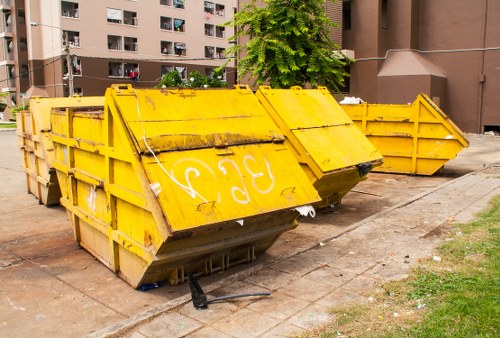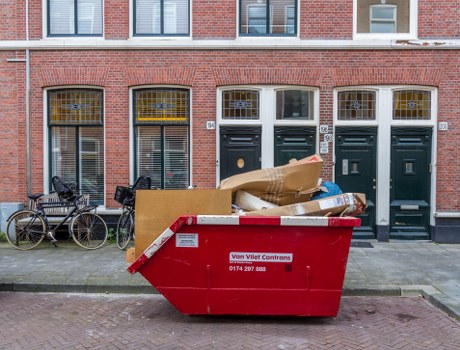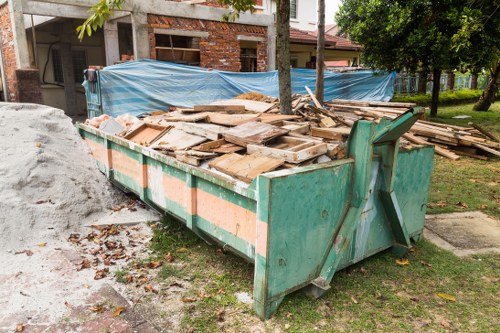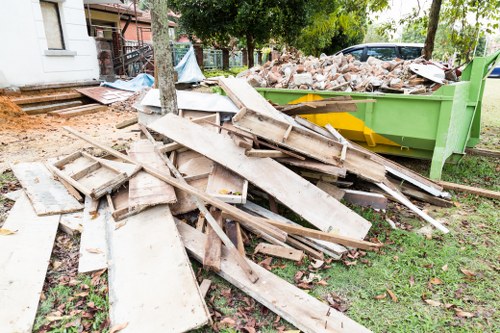Furniture Disposal in Clearance Sucks
The Frustration of Furniture Disposal

Are you gearing up for a big clearance? While discounts and deals are enticing, the aftermath can be a nightmare, especially when it comes to disposing of old furniture. Furniture disposal in clearance sucks for many reasons, ranging from logistical challenges to environmental concerns.
Imagine purchasing a new sofa during a clearance sale, only to realize the old one needs to be discarded properly. The process can be time-consuming, stressful, and often more complicated than anticipated. This article delves into why furniture disposal during clearance periods can be so troublesome and offers practical solutions to ease the burden.
Understanding the complexities of furniture disposal is the first step in tackling the issue. Whether you're a retailer managing inventory or a customer trying to declutter, the challenges remain similar.
Why Furniture Disposal is a Hassle

Logistical Challenges
During clearance sales, the influx of customers often means transporting large quantities of furniture in a short period. This surge can strain existing disposal systems, leading to delays and inefficiencies.
Moreover, coordinating pickup times, ensuring adequate transport vehicles, and managing disposal schedules add layers of complexity. Retailers might find themselves overwhelmed, leading to compromised disposal practices.
For consumers, the inconvenience of scheduling pickup or disposal services can deter them from making additional purchases, affecting overall sales and customer satisfaction.

Environmental Concerns
Improper furniture disposal has significant environmental implications. Many discarded furniture pieces end up in landfills, contributing to pollution and wasted resources.
Additionally, the materials used in furniture manufacturing, such as wood, metal, and plastics, can take years to decompose. This not only harms the environment but also depletes valuable resources that could be recycled or reused.
Consumers are increasingly eco-conscious, and knowing that their disposal methods are harmful can lead to dissatisfaction and reluctance to engage in clearance sales.
Financial Implications

Cost of Disposal
Disposing of furniture isn't free. Whether it's hiring a disposal service, paying for transportation, or managing recycling fees, the costs can add up quickly.
For businesses, these expenses can significantly impact profit margins during clearance periods. Retailers must balance offering attractive discounts while managing the additional costs associated with disposal.
Consumers also face financial burdens, especially if they need to pay for bulk disposal services or invest in new disposal solutions to handle their old furniture.

Time Consumption
Time is a precious commodity, and furniture disposal can be incredibly time-consuming. Sorting, packing, and arranging for pickup or drop-off requires substantial effort.
For businesses, allocating staff and resources to manage disposal can detract from other critical operations, such as customer service and inventory management.
Individuals, on the other hand, may find themselves spending hours dealing with disposal logistics, which can be a deterrent from participating in clearance sales altogether.
Solutions to Simplify Furniture Disposal
- Partner with Disposal Services: Collaborate with professional disposal and recycling services to manage large volumes efficiently.
- Implement a Take-Back Program: Encourage customers to return old furniture when purchasing new items, simplifying the disposal process.
- Promote Recycling: Educate customers on the benefits of recycling and provide resources to facilitate eco-friendly disposal.
- Streamline Logistics: Optimize transportation and scheduling to handle the increased volume during clearance periods.
Embracing Technology
Leverage technology to manage disposal more effectively. Implementing software solutions for scheduling pickups, tracking disposed items, and managing inventory can streamline the process.
Additionally, using data analytics can help predict disposal needs during clearance periods, allowing for better planning and resource allocation.
By embracing technological advancements, businesses can reduce the burden of furniture disposal and improve overall efficiency.
Eco-Friendly Disposal Methods
Recycling and Upcycling
Recycling involves breaking down furniture materials to create new products, reducing the need for raw materials and minimizing waste.
Upcycling takes this a step further by transforming old furniture into something new and functional, adding value while promoting sustainability.
- Recycling wood into mulch or new timber products
- Repurposing metal parts for construction or art projects
- Transforming old upholstery into new fabrics
These methods not only help the environment but also cater to the growing market of eco-conscious consumers.

Donating to Charities
Donating old furniture to charities or non-profit organizations is a noble way to dispose of items responsibly.
Organizations often accept gently used furniture, providing those in need with essential items while reducing landfill waste.
Additionally, businesses can enhance their corporate social responsibility profiles by engaging in donation programs, appealing to socially aware customers.

Professional Disposal Services
Hiring professional disposal services ensures that furniture is disposed of correctly and efficiently.
These services handle the heavy lifting, transport, and proper disposal methods, saving time and reducing the hassle for both businesses and consumers.
Moreover, professionals are well-versed in eco-friendly disposal practices, ensuring compliance with environmental regulations.

Best Practices for Retailers
Pre-Planning Clearance Events
Successful clearance sales require meticulous planning, especially concerning furniture disposal.
Retailers should anticipate the volume of items to be disposed of and arrange the necessary resources in advance.
By pre-planning, businesses can avoid last-minute logistical issues and ensure a smooth clearance process.
Inventory Management
Effective inventory management plays a crucial role in minimizing disposal challenges.
Implementing inventory tracking systems helps in identifying which items are due for clearance and need disposal, allowing for better organization.
Accurate inventory data also aids in forecasting disposal needs, ensuring that adequate resources are available when required.

Employee Training
Training employees on proper disposal procedures can significantly enhance the efficiency of clearance sales.
Employees should be educated on sorting, handling, and disposing of furniture correctly to maintain consistency and compliance with disposal standards.
Well-trained staff can also assist customers in understanding disposal options, improving overall customer experience.
Customer Communication
Clear communication with customers regarding disposal practices is essential.
Informing customers about available disposal options, such as take-back programs or recycling initiatives, can ease their concerns and encourage participation in clearance sales.
Providing transparent information builds trust and fosters a positive relationship between the business and its clientele.

Practical Solutions for Consumers
Scheduling Pickups
Consumers can simplify furniture disposal by scheduling pickups with professional services.
This approach eliminates the need for transportation and ensures that items are disposed of correctly.
Many disposal services offer flexible scheduling, accommodating the consumer's timeline and reducing inconvenience.
Utilizing Local Resources
Local resources, such as community recycling centers and donation facilities, provide convenient options for furniture disposal.
By leveraging these resources, consumers can dispose of items responsibly without incurring additional costs.
Exploring local disposal options also supports community sustainability initiatives, contributing to a cleaner environment.

DIY Disposal Methods
For those who prefer a hands-on approach, DIY disposal methods offer flexibility and control.
Breaking down furniture for recycling, repurposing items for new uses, or selling second-hand pieces are viable options.
While more time-consuming, DIY methods can be cost-effective and tailored to individual preferences.
Safety Considerations
Regardless of the disposal method chosen, safety should never be compromised.
When handling heavy furniture, proper lifting techniques and the use of protective gear are essential to prevent injuries.
Additionally, ensuring that hazardous materials are disposed of correctly is crucial for personal and environmental safety.
Impact on the Environment
Sustainability Concerns
Furniture disposal practices significantly impact environmental sustainability.
Reducing waste through recycling and upcycling not only conserves resources but also lowers the carbon footprint associated with production and disposal.
Embracing sustainable disposal methods aligns businesses with global environmental goals and meets the growing demand for eco-friendly practices.
Regulatory Compliance
Adhering to environmental regulations is imperative for responsible furniture disposal.
Non-compliance can result in hefty fines, legal issues, and reputational damage.
Staying informed about local and national disposal laws ensures that businesses and consumers alike contribute positively to environmental stewardship.
Technological Innovations in Disposal

Smart Disposal Systems
Advancements in technology have introduced smart disposal systems that streamline the process of furniture disposal.
These systems utilize data analytics and automation to predict disposal needs, manage schedules, and optimize resource allocation.
Implementing smart disposal solutions can significantly reduce the time and effort required, making the process more efficient for both businesses and consumers.
Recycling Technologies
Innovative recycling technologies have transformed how furniture materials are processed.
Advanced machinery can break down complex materials more efficiently, resulting in higher recycling rates and better product quality.
These technologies not only enhance the effectiveness of recycling programs but also open new avenues for sustainable product development.

Community Involvement
Local Initiatives
Engaging with local communities fosters a collaborative approach to furniture disposal.
Community-driven initiatives, such as local recycling drives and donation events, provide accessible disposal options for residents.
By participating in these initiatives, businesses and individuals contribute to a collective effort towards sustainable disposal practices.
Educational Programs
Implementing educational programs raises awareness about the importance of responsible furniture disposal.
Workshops, seminars, and informational campaigns can educate the public on various disposal methods and their environmental impact.
Informed communities are more likely to engage in sustainable practices, fostering long-term environmental benefits.

Future Trends in Furniture Disposal
Circular Economy
The concept of a circular economy is gaining momentum in the realm of furniture disposal.
This model emphasizes the continuous use of resources, minimizing waste through recycling, reusing, and refurbishing products.
Adopting a circular economy approach can revolutionize furniture disposal, making it more sustainable and efficient.
Biodegradable Materials
Innovations in material science are leading to the development of biodegradable furniture materials.
These materials naturally decompose over time, reducing the environmental impact of disposed furniture.
Biodegradable options provide a promising solution to the challenges of traditional furniture disposal methods.

Conclusion
Embracing Change
Furniture disposal during clearance events presents significant challenges, but with the right strategies, these hurdles can be overcome.
By understanding the issues, implementing effective solutions, and embracing sustainable practices, both businesses and consumers can navigate the complexities of furniture disposal.
Don't let furniture disposal discourage you from participating in clearance sales. Instead, take proactive steps to manage the process efficiently and responsibly.
Take Action Today
If you're facing challenges with furniture disposal, contact us today for professional assistance. Our expert team is ready to help you navigate the complexities and find the best solutions tailored to your needs.
Book your service now and experience hassle-free furniture disposal during your next clearance event.